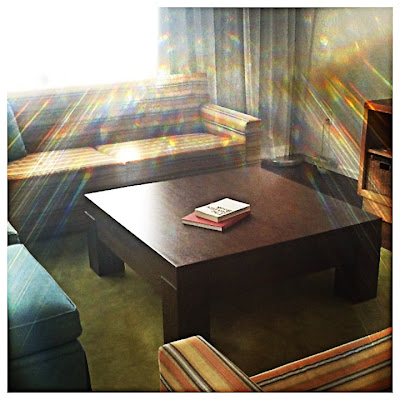Thursday, June 28, 2012
Extra Implied Pictures
Sunday, June 24, 2012
Redesign A Room
Above are picture of the dining room at my house. It is a small space, but it is one room I have always thought it had so much potential! I tried to edit a few of the picture, but there were always elements that seemed to disappear in the room. Therefore, I left the pictures in natural lighting.
Texture
Actual Texture
Implied Texture
Variety
Variety
Unity + Harmony
Unity + Harmony
Proportion + Scale
Proportion + Scale
Form + Space
Space
 |
| Actual: By seeing both of these walls in the picture, we can see that this is intended to be an actual space such as a living area. |
Saturday, June 23, 2012
Designers
For this post, I found it very simple to find designers that inspired me. I felt as though many of the designers I came across might not have had the same "style" or the same interests as me, but I could take elements that designers use and incorporate them into my own style. Discovering these designers allowed me to see that I did not have to be limited to design inspirations just because they're finished product didn't look like something I would particularly like. It showed me to look past that and delve into the elements of the room that I was inspired by or could alter to fit into my design style.
My favorite design blog is Coco Cozy. I was inspired the most by this blog because they show typically just one or a series of a few simple pictures that allow you to take the entire room in. There are not a million pictures of each element of the room. The blog also shares where they got their inspiration from which allows you to get inside the designers head in a way to see where they see inspiration in their everyday life.
Thursday, June 21, 2012
Principles of Design
Monday, June 18, 2012
Shapes and Planes
Most of the pictures I chose to use were pictures taken from my parents house. I tried to stay with my design concept as much as possible even though I was no where near Athens. Since most of my inspiration came from Athens, I chose as many shapes and elements as possible that reminded me of things I had seen in Athens. I included darker colors and shapes that were unconventional.
.JPG) |
| Abstract |
.JPG) |
| Geometric |
.JPG) |
| Natural/ Organic |
.JPG) |
| Geometric |
.JPG) |
| Abstract and Non- representational |
.JPG) |
| Planes |
.JPG) |
| Geometric/ Organic/ Abstract/ Non Representational |
Thursday, June 14, 2012
My Inspiration Links
The links I chose for my blog were a mix of interior design, fashion, and cooking blogs. I was attracted to these sites initially for the simplicity of the content. I like how the pictures are very close-up and to the point. There are not extra elements in the picture to distract you from exactly what you need to be looking at. The food blogs capture so many colors in the dish itself that I honestly would not have noticed before. The style blogs provide pieces to put together without overwhelming you with ideas. I draw inspiration from many of those blogs by a piece or two that I see, without being overwhelmed an "outfit".
If I had to choose just one link, I would choose the Little Green Notebook. I love how she finds design in so many places that she visits or things that she eats. Although her blog focuses on her interior designs, she shows where she draws her inspiration from, which is basically everywhere. It makes me realize that you can literally draw inspiration from anywhere!
Inspriation Board
Subscribe to:
Comments (Atom)








.JPG)
.JPG)
.JPG)
.JPG)
.JPG)
.JPG)
.JPG)






















